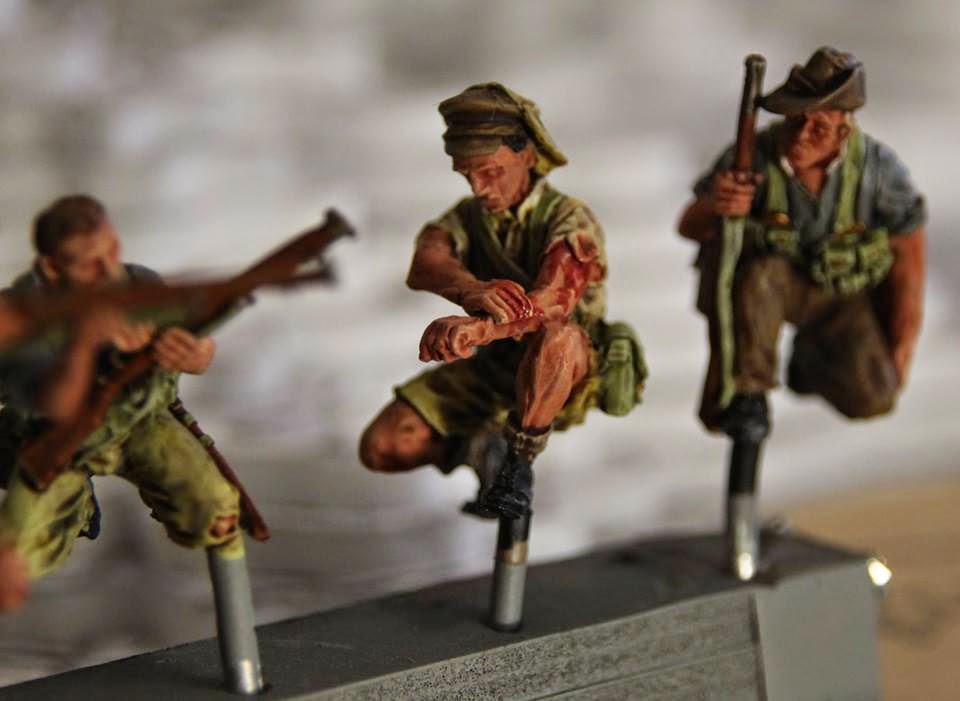Russell Briant was given the job of painting the personality figures. As you can see here, he has done a magnificent job with them.
Lt-Colonel William Malone and a signaller
Malone led his Wellington Battalion in the seizure of the Apex on Rhododendron Ridge, but refused to follow up a disastrous attack by the Auckland Battalion on Chunuk Bair, insisting that he would not send his men ‘over to commit suicide’.
The next morning, 8 August, the Wellington Battalion captured the summit with little difficulty. Throughout the day, they threw back fierce Ottoman counter-attacks in fighting that left most of the battalion dead or wounded (the subject of our diorama).
Malone excelled in this desperate situation, leading his men in driving the enemy back until he was killed by artillery fire, probably from a New Zealand howitzer, around 5 p.m.
Corporal Cyril Bassett VC
Citation for Victoria Cross: 'No. 4/515 Corporal Cyril Royston Guyton Bassett, New Zealand Divisional Signal Company. For most conspicuous bravery and devotion to duty on the Chunuk Bair ridge in the Gallipoli Peninsula on 7th (sic) August, 1915.
After the New Zealand Infantry Brigade had attacked and established itself on the ridge, Corporal Bassett, in full daylight and under a continuous and heavy fire, succeeded in laying a telephone line from the old position to the new one on Chunuk Bair.
He has subsequently been brought to notice for further excellent and most gallant work connected with the repair of telephone lines by day and night under heavy fire.'
—The London Gazette, No. 29238, 15 October 1915
Sergeant-Major Wagner and Captain Jesse Wallingford
Wagner was with the 7th Battalion, Gloucestershire Regiment, who manned the captured trench on Chunuk Bair alongside the Wellington Battalion.
Wallingford was a British Olympic medal-winning shooter. He was brought to New Zealand in 1911 direct from the School of Musketry, Hythe, England, to act as instructor to the New Zealand territorial forces. At Chunuk Bair he was officer in charge of the machine guns.


















































